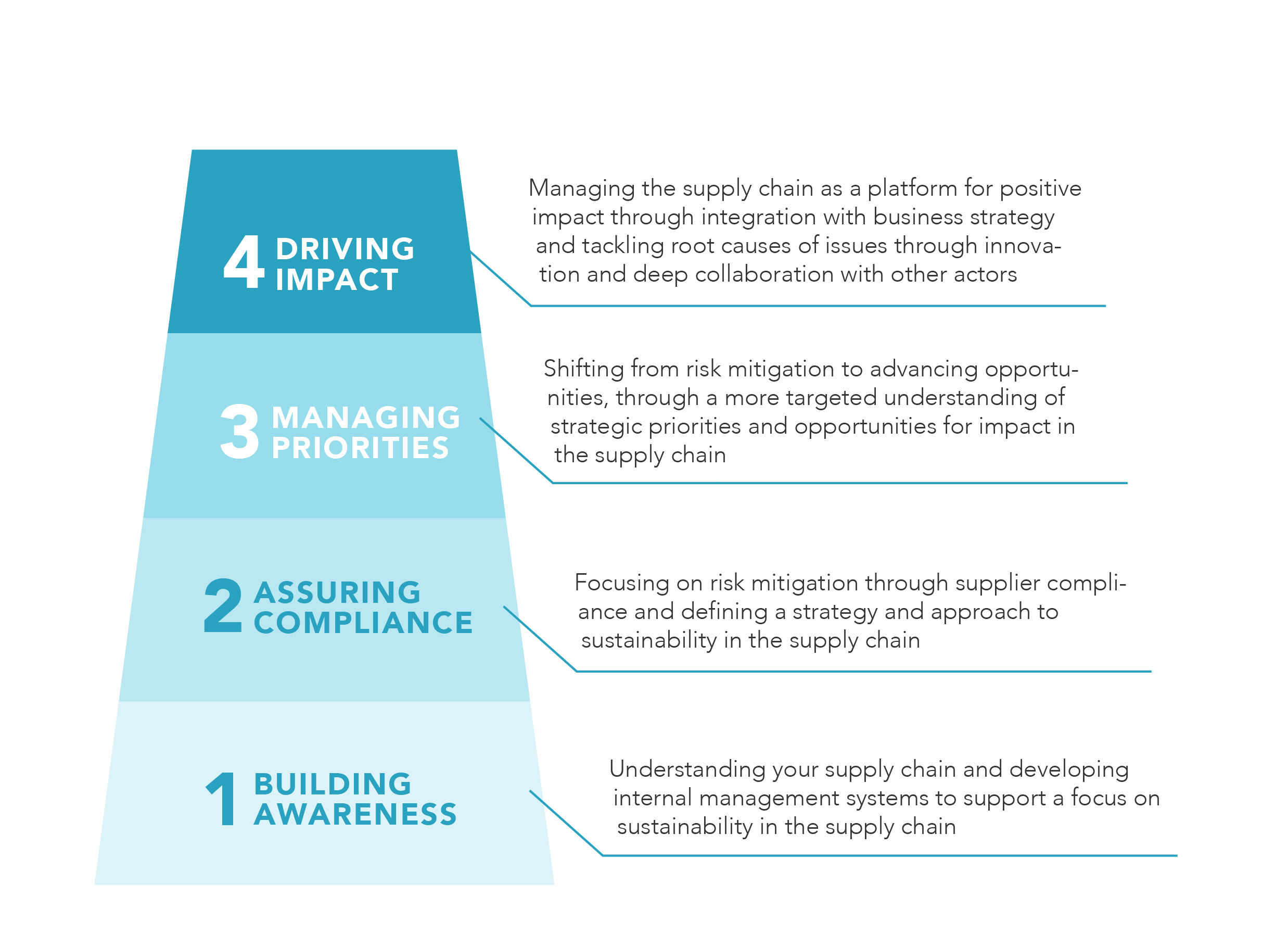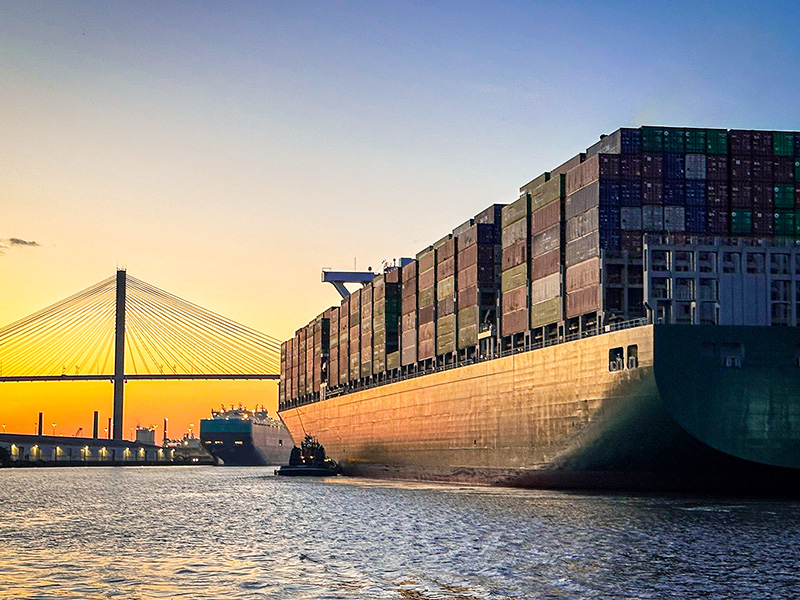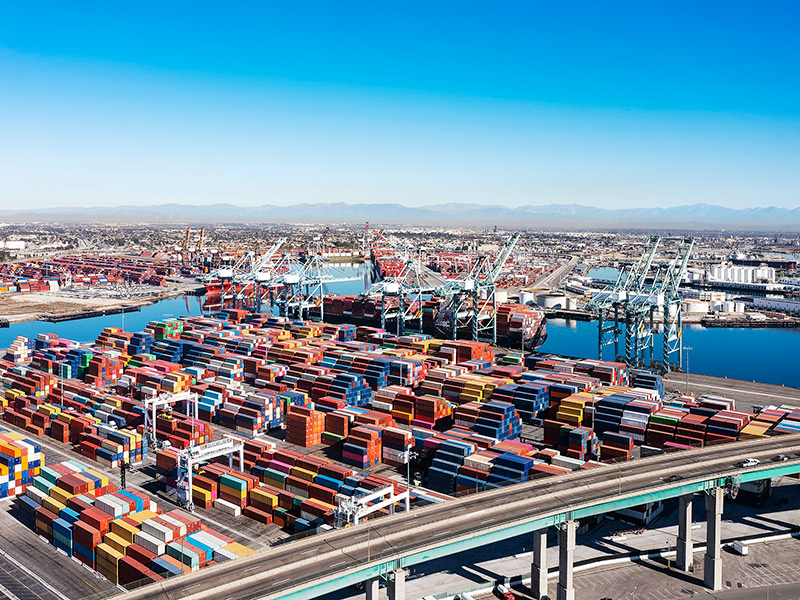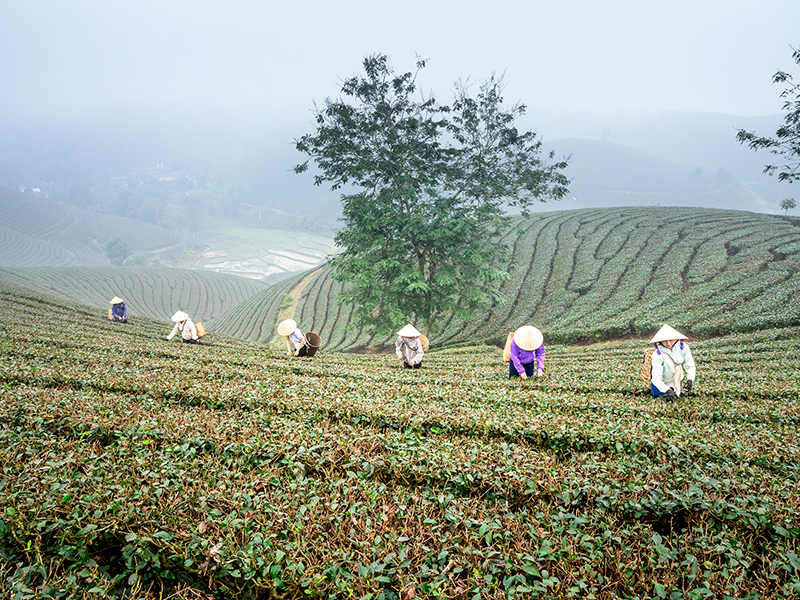
Authors
-
Tara Norton
Former Managing Director, BSR
-
Meghan Ryan
Former Associate Director, BSR
Many blogs in 2017 are going to start with some play on this obvious theme: We are living in uncertain times. For supply chains, you could argue that this is nothing new, as the complexities of global supply chains have always incorporated a high degree of uncertainty. BSR member companies know they need to manage this uncertainty, and having a supply chain sustainability program is, in essence, a program to do just that. Whether a company calls its program “supply chain sustainability,” “responsible sourcing,” “responsible supply,” “sustainable procurement,” or another name, our members know that these programs help them reduce uncertainty, identify and manage risk, and generate business value. According to the 2016 BSR/GlobeScan State of Sustainable Business Survey, 84 percent of respondents reported having a supplier code of conduct, and 61 percent reported considering sustainability in sourcing strategies.
While the principle of having a sustainable supply chain program is clear and widely accepted, there is still a lack of consensus on the practice. Notwithstanding the forthcoming launch of the ISO 20400 standard on sustainable procurement, there exists no globally accepted framework for what constitutes good practice, although there are frameworks for labor rights through the ILO fundamental principles and core conventions, human rights through the UN Guiding Principles on Business and Human Rights, and, now, climate change through the Paris Agreement.
BSR has nearly 25 years of experience working with companies to drive sustainability through supply chains, and our membership network offers a breadth of good practice. BSR has seen, and continues to see, the evolution of sustainable supply chain management toward greater and deeper impact. In our experience, even if it’s not codified in international frameworks or national laws, a universally accepted framework for sustainable supply chain management has emerged. This framework is applicable across industries, geographies, and cultures—and even across differences in size and levels of ambition among companies.
The Supply Chain Leadership Ladder
BSR’s Supply Chain Leadership Ladder sets out this framework. The ladder allows companies to benchmark their supply chain sustainability program and assess where they are in their maturity, based on the internal and external dimensions of their program.
- Internal dimensions are the scope and structure of the supply chain sustainability program and how the program is governed and managed.
- External dimensions are the company’s approach to supplier engagement and how it is collaborating and reporting.
Each rung of the impact ladder has a defining statement and a set of common elements that helps identify how far up the ladder a company’s supply chain sustainability program sits—is it at level 1, building awareness, or is it all the way up to level 4, driving impact?

Moving Up the Ladder
In the last year, we’ve seen a continued shift upward among leading companies, moving up the ladder from assuring compliance to managing priorities, across both internal and external dimensions.
For a few years now, we’ve seen companies shift their program scope to incorporate specific priority issues or supply chain categories and now really pushing toward driving impact. For example, companies are identifying the biggest impact categories in their supply chains—see Kering’s focus on sustainable raw materials and H&M’s sustainable cotton efforts. Companies are also addressing the issues that are most material for their business and aligned with action on global priorities such as the Paris Agreement and the Sustainable Development Goals. For instance, Walmart’s efforts at defining science-based climate targets for its supply chain, ANN INC.’s women’s empowerment program, and the Global Impact Sourcing Coalition, facilitated by BSR.
This trend is also playing out in the way companies are engaging their suppliers and reporting. The concerted effort by some companies to publicly disclose their supply chains, such as Marks & Spencer’s Interactive Supplier Map, in some ways draws a line under the compliance movement to allow a new way forward—through transparency. If everyone can see a company’s supply chain, there is arguably less incentive to continue the auditing processes of the past.
Even collaborative industry efforts are part of this trend. For example, the Electronic Industry Citizenship Coalition’s (EICC) initiatives on key supply chain risks show a move up the ladder from general compliance to identifying the areas where the 110-plus EICC members can collectively have the most impact. Even newer initiatives such as Railsponsible, a sustainable procurement initiative for the rail industry that BSR facilitates, is collectively identifying the key priorities in the industry’s supply chain for 2017.
BSR would argue that all companies, across all industries, in all geographies, and of all sizes should at least be on the ladder. How high you climb is up to your appetite for leadership, your ability to actualize value from your supply chain sustainability program, and the kind of legacy and impact you want to leave in the world.
We’re going to be hearing a lot about uncertainty in 2017. For supply chains, this is nothing new, and we offer the ladder as a framework for responsive, resilient supply chain management.
BSR’s latest sustainability insights and events straight to your inbox.
Topics
Let’s talk about how BSR can help you to transform your business and achieve your sustainability goals.







